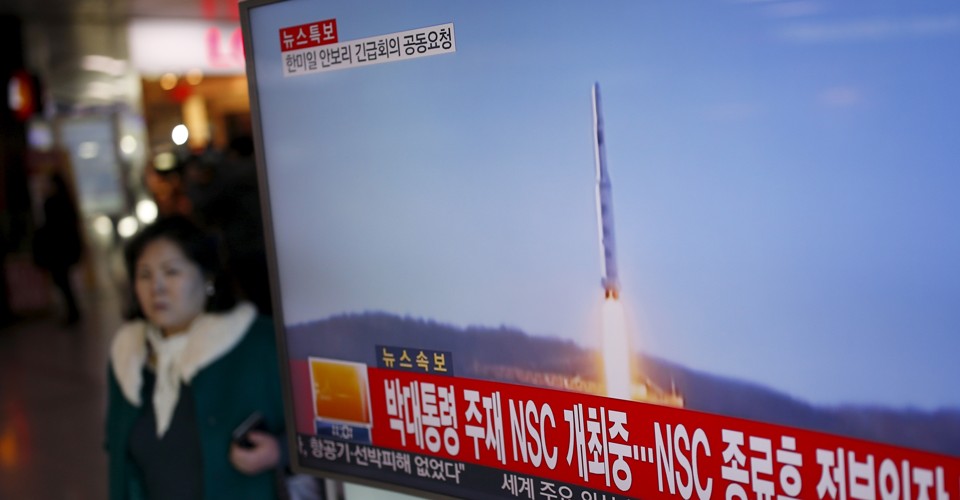North Korea is preparing for a new ballistic missile launch, a news report said on Saturday.
The test will be held ahead of joint naval drills between the United States and South Korea, added the Donga Ilbo daily that cited a government source.
Satellite pictures show ballistic missiles mounted on launchers being transported out of hangars near Pyongyang and in the North Phyongan Province.
US and South Korean military officials suspect the North might be preparing to launch missiles capable of reaching US territory, the newspaper said.
This could be the Hwasong-14 inter-continental ballistic missile (ICBM), whose range could extend to Alaska, or Hwasong-12 intermediate-range missiles which Pyongyang threatened to fire towards the US Pacific territory of Guam in August, the report said.
Another possibility is that the North might be preparing to test a new Hwasong-13 ICBM, it added, that has a longer maximum range than the other two missiles and could potentially reach the US West Coast.
A defense ministry spokesman declined to comment on the report, saying: “We don’t comment on any matters of military intelligence. We are keeping a close watch over the North.”
The US navy said Friday that the USS Ronald Reagan aircraft carrier will lead the exercises with South Korea in the coming week, a fresh show of force against North Korea. The move will likely rile Pyongyang which has previously responded angrily to joint exercises.
The joint drills led by the USS Ronald Reagan aircraft carrier come after hectic US military hardware movements around the Korean peninsula in recent days.
These follow a flurry of missiles from Pyongyang, which conducted its sixth and most powerful nuclear test last month in defiance of international sanctions.
On Friday the nuclear-powered USS Michigan submarine arrived at the southern South Korean port of Busan, just days after another nuclear-powered submarine — the USS Tuscon — left after a five day visit.
Earlier this week the US flew two supersonic heavy bombers over the Korean peninsula, staging the first night-time joint aviation exercises with Japan and South Korea.
US President Donald Trump’s continued threats of military action against Pyongyang if it does not tame its weapons ambitions have fueled fears of conflict on the Korean peninsula.
On Friday however, he said that he was open to the possibility that negotiations can steady tensions with Pyongyang, but he appeared to suggest he was keeping military options open.
Trump told reporters at the White House: “If it’s going to be something other than negotiation, believe me we are ready more so than we have ever been.”
He was responding to a question about his comment last week before a dinner with military leaders when he referred ambiguously to “the calm before the storm.”
Trump recently declared that his top diplomat was “wasting his time” in trying to negotiate with the North.
Meanwhile, the European Union will agree on Monday to ban business ties with North Korea, part of a new package of sanctions to isolate Pyongyang over its nuclear and missile programs.
The practical impact of the moves is likely to be mostly symbolic: Brussels will impose an oil embargo and a ban on EU investment, but it sells no crude to North Korea and European companies have no substantial investments there.
North Korean workers in the EU, of which Brussels estimates there are about 400 mainly in Poland, will face a lower limit on the amount for money they can send home and their work visas will not be renewed once they expire.
The measures to be agreed by EU foreign ministers in Luxembourg go further than the latest round of multi-lateral sanctions imposed by the United Nations Security Council.
